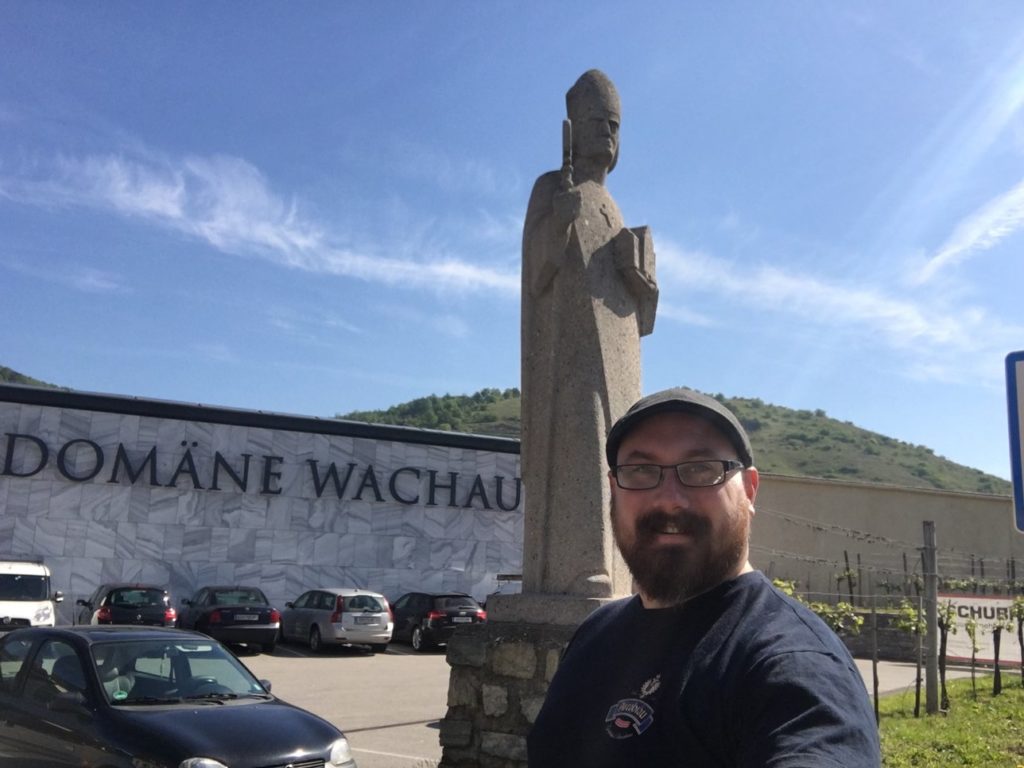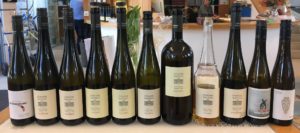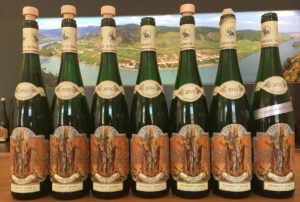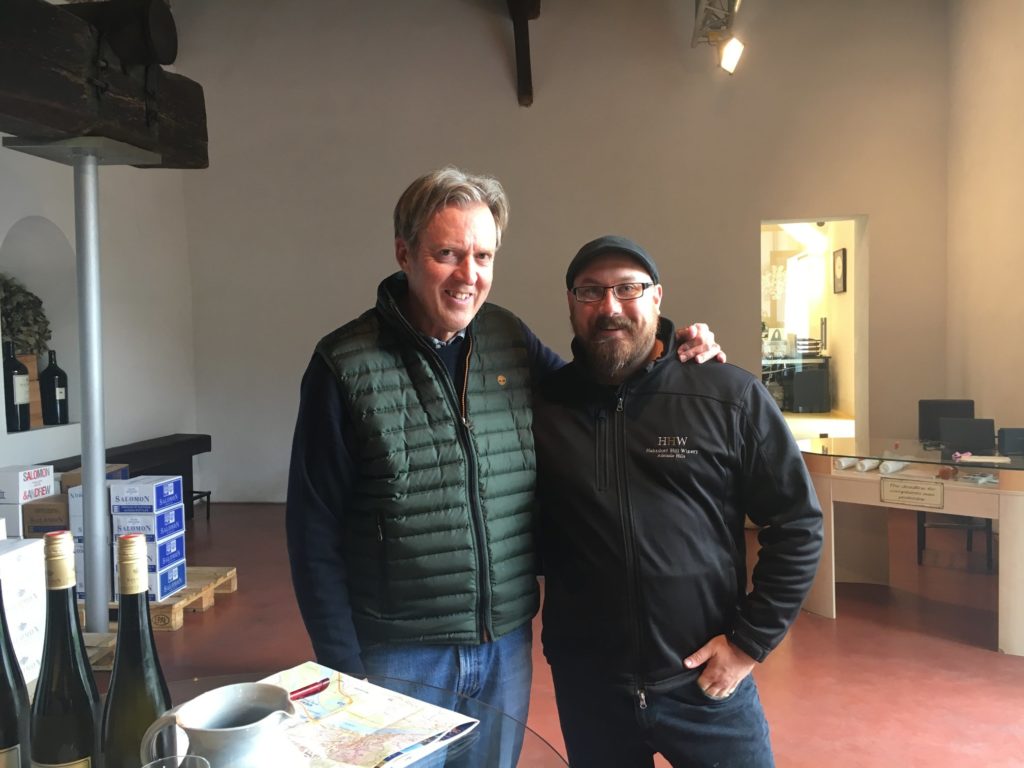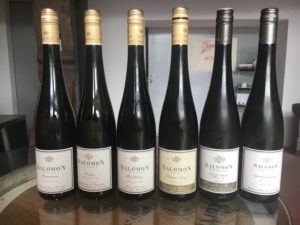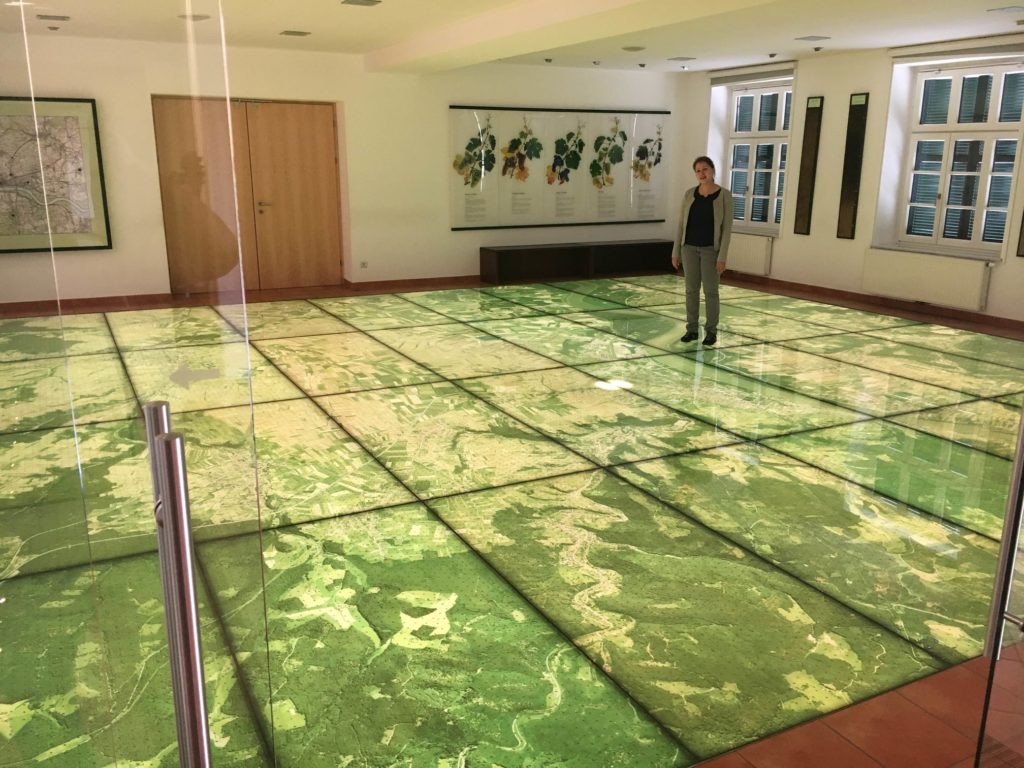
Hahndorf Hill Winery
  Adelaide Hills
Days 5 & 6 – Wachau and Kremstal
The city of Krems is a university town on the banks of the Danube, 20 minutes by train from Langenlois and will be my base for exploring the Wachau and Kremstal wine regions. The ruling Babenbergs selected the site and established Krems as their seat of power in 1120 AD. Today it consists of its famous Altstadt (old town), virtually unchanged since the 1700s with its renaissance Rathaus (town hall) and a parish church that is one of the oldest in Lower Austria, and the more modern universities, museums and entertainment districts of the new town.
Only a short bus ride from Krems is the medieval village of Durnstein in the Wachau, which sits on a steep mountainside bend in the Danube; its huge fortification walls are up to 40m high and in some parts as thick as 20m. Perched high above sits the ruins of an ancient castle, for a brief time (and against his will) home to Richard the Lionheart. Large vaulted archways elevate covered walkways and dwellings above the concentric streets, and narrow laneways provide short cuts around the city for locals and the more observant of visitors.
Built into the gatehouse structure at the main entrance to the walled city is the Durnstein Vinothek; typical of shops in ancient cities, it is cosy and dim with thick walls and low roof. The Vinothek is a great ambassador for wines of the Wachau; owner Veronika is passionate about their signature varietals Gruner Veltliner and Riesling, charging only two euros to sample half a dozen of her best.
Domaine Wachau is the largest and most famous of the local producers. A co-op of 250 growers, Domaine Wachau now has global distribution and for many this is their first taste of Gruner Veltliner. They have a very impressive and modern cellar door and are only too happy to guide you through what makes their region special. A unique variety of soil types, climate and a quality classification system called the Wachau Codex all combine to make these wines some of the most desirable in the world.
Word got out that a Gruner Veltliner producer from Australia was visiting, so winery director Roman Horvath MW invited me to taste some very special and not publicly available mature vintages and as yet not-released, experimental wines. A delicious and enlightening few hours.
With time on my hands I decided to take a stroll along the Danube (I feel like I’ve heard that before) and just see what I could see. On the far side of the swollen and swiftly flowing river rose almost sheer cliffs that reluctantly broke off into thickly forested hills marching off into the distance. Nearby snuggled the three villages of Durnstein, Oberloiben and Unterloiben on a narrow strip of flat land that rose almost as steeply in a series of terraced and individually named vineyards.
The wines of the Wachau seem to come out of either large global brands or very small family operators whose wines rarely make it beyond the district; one such is Brustbauer. Karl Brustbauer is a former mayor of Durnstein, local historian and the current custodian of his great-great-grandfather’s winery. “My son and I do everything,†declares Karl, “but this is not mine, nor his. We belong to the land, not the other way around!†Karl invited me into his home chuffed beyond measure that a wine fan from what might as well have been another planet had taken an interest in his babies; he opened several bottles and humbly talked me through what I can honestly say are some of the best Gruner Veltliners I have tasted.
Karen Fink of Fink Wines is a lady my grandmother would have described as “salt of the earthâ€. An entirely missable sign posted high on the corner of her 500-year old house was the only clue as to what might be found inside. Her wines are priced in the entry to mid range but are honest, clean and well made. I found Fink by chance and with luck like this I think I might buy my first ever lottery ticket as soon as possible.
2006 is when Hahndorf Hill imported our first three Gruner Veltliner clones from Austria, but the research began long before that. For us thorough investigation into the different styles and terroirs of Gruner was – and still is – crucial to making educated decisions about our path forward, and it is for this reason we have kept a respectful eye on the Knoll winery – a master of the Wachau’s Federspiel and Smaragd-classified Gruners. Producing excellent single vineyard and “village†wines, Knoll’s range is perfectly tuned to the region.
The current 2016 and previous 2015 vintages both show crisp acid and zippy minerality, while less primary fruit than the Kamptal and Kremstal regions gives the Knoll Federspiel wines their signature “pfefferl†and savoury notes. I was given a very warm welcome by the winemaker Emmerich Knoll and his wife, but their big four legged and not at all intimidating security guard extracted a toll before letting me past the front door: a solid ten minutes of belly scratches.
Since arriving in the Wachau I have tried a dozen or so examples of Federspiel category of wines, each with fruit from the same block but vinified by different producers, and all share a characteristic I have not found anywhere else in Austria but which is prominent in the Hahndorf Hill Gru – and that is a delicate chalky mouthfeel on the roof of my mouth. It is thrilling to know that our wines are already growing up to resemble their illustrious and ancient cousins.
The newer quarters of Krems occupy the flatter ground between the Danube and the base of the terraced vineyards and old town which climbs the north-eastern slopes. Right on the seam between the two sits the Salomon Estate; Bert Salomon has a very high profile in both Austria and Australia (he currently produces vintages in South Australia). Topping well over six feet and with a handshake like a Kodiak bear, he welcomed me into his cellar door and pummelled me with questions on our 2017 vintage and if we suffered the rains he did.
Selected Salomon wines are available in Australia and I would encourage you to try them. The 2016 vintage was good to the Kamptal, the wines are crisp but delicate, aromatic and flavoursome. The crew at Salomon share the Hahndorf Hill passion for food and wine pairing; we spent more time than I could really afford waxing lyrical about what we would serve with each wine when next we met.
Also in the city is Winzer Krems, a co-operative of around 1000 growers who together form Austria’s largest producer. They offer a range of varieties but Gruner Veltliner is their priority, making up 60% of their volume. The cellar door is perched atop a hill providing an awesome view of the lower Wachau opening into the central Austrian plain and the famous Gottweig Abbey, and all that is very nice but what draws the 1.5 million visitors a year is their “World of Wine†experience.
The World of Wine experience is a fully immersive tour where you are first guided to an original stone hut constructed to provide shelter for the vineyard guardians whose role it was to scare off grape thieves be they on foot or wing. Here you enjoy a glass of their premium Gruner Veltliner whilst your guide, in my case the lovely Terresa, gives a brief history of the company and region.
Next we move into a giant map room measuring 8m x 8m where the entire floor is an illuminated map detailing the region and highlights specific points of interest such as the home of Winzer Krems and some of their highest rated vineyards. Looking back now it may have been a little immature but my headstone will now read:
Here lies Jack
“I moonwalked the Danubeâ€
A walk through the underground cellar brings you to a large concrete vault where you can sip on a glass of red and look yet further down into the winery’s massive fermentation tank area. What happened next was something every winemaker, writer, seller and drinker should experience: a 4D film devoted to the geology, vineyard cultivation and maintenance, resident flora and fauna, weather and production methods that have propelled Winzer Krems to world fame.
Now if like me you just whispered “What is 4D?â€, then hopefully my explanation can do it justice. You are handed a pair of 3D glasses as you walk into a very smart theatre, then the film opens to close-up shots of life blooming in a vineyard and sweeping views of the valley. Then comes the fourth dimension; as the film describes the winter weather a gale of glacial wind roars over you; a farmer mows between his vines and the fragrance of cut summer grass fills your nostrils. Fragrance plays a significant role in the experience, just as it does in wine. Next, aromatic components of both their reds and whites are wafted past you as the film describes what makes Kremstal wine the “most food friendly in Austriaâ€. I make my living trying to evoke a sense of passion and sensory excitement in my customers, so believe me when I say that this film is a must see/feel/smell/taste experience.
The next station on the tour is a long tunnel where conceptual artist Georgia Creimer has constructed six projected light installations showing how wines should be enjoyed, with food, without food, with people or alone, for fun or serious debate. It’s almost as if she secretly spied on my house for a week! Then we arrive back where we started in the Vinothek; most of the Winzer Krems wines are available to taste and a large retail space means you can load the car up nice and easy.
Krems, Durnstein and all the charming little Wachau villages in between have offered up some of the finest wines of my trip. The views are spectacular and the people are warm and friendly. I lament spending only a few days here as a week or more could be lost very easily, but all good things must come to an end.

